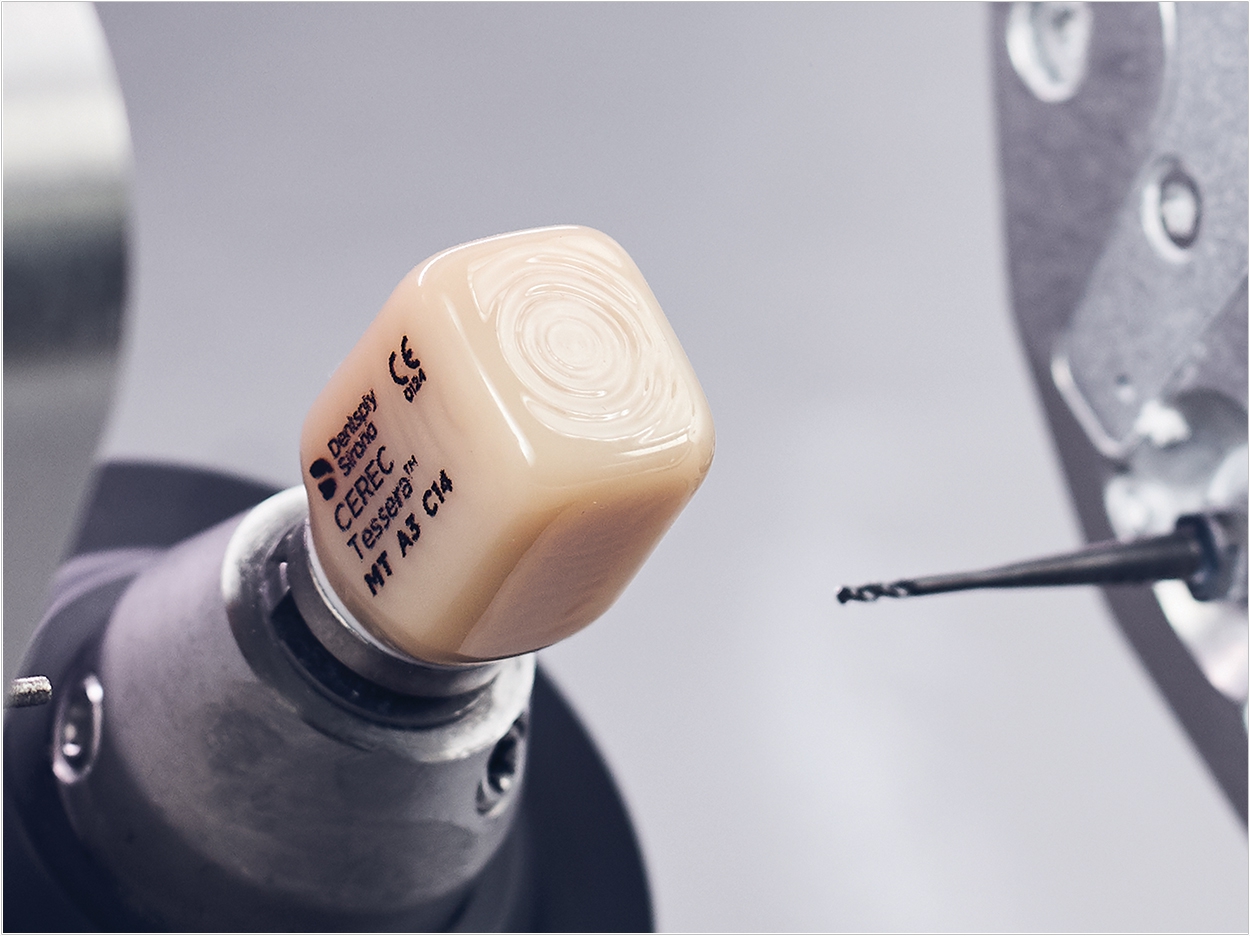
Dentsply Sirona’s CEREC Tessera Advanced Lithium Disilicate (ALD) CAD/CAM Blocks are designed for CAD/CAM-fabricated restorations in the anterior and posterior regions. The ALD ceramic can be fired exceptionally quickly, according to the company. The glaze firing for a crown takes four and a half minutes, accelerating the entire manufacturing process. It also boasts high aesthetics and flexural strength, making the CEREC Tessera blocks an attractive option for single-visit dentistry, Dentsply Sirona said.
Dentists frequently use high-strength glass ceramics when they’re fabricating restorations, the company said, because of aesthetics. Patients usually want restorations that look nearly identical to their natural teeth. Lithium disilicates play an important role in these materials, Dentsply Sirona said, as their results are convincing in all of the areas of the mouth, and they can be used in CAD/CAM-fabricated restorations such as those using CEREC Primemill.
The CEREC Tessera ALD CAD/CAM Blocks’ fast firing time is mainly made possible by the special and new composition of the ceramic, Dentsply Sirona said, lithium disilicate and virgilite, a lithium aluminum silicate. The blocks are composed of a new material that includes virgilite. During the firing process, new virgilite crystals are formed and embedded in a zirconia enriched glass matrix. Together, these material constituents combine to create a robustly reinforced, high-density restorative material, according to the company.
The dense interwoven crystal composition of the blocks is the key to their strength, Dentsply Sirona said, and helps suppress the presence of microcracks and subsequent crack propagation. The same microcrystal composition (lithium disilicate and virgilite) of the blocks that’s responsible for the material’s high biaxial and flexural strength also contributes to its highly aesthetic and dynamic light refraction, transmission, and absorptive properties that mimic the visual vitality of natural dentition, Dentsply Sirona said.
The high strength of the blocks also provides clinical benefits via low minimal wall thickness preparation guidelines and the ability to use conventional cementation, according to the company. All CEREC Tessera restorations can be fixed adhesively with Prime&Bond and Calibra Ceram, for example. Restorations with a wall thickness of 1.5 mm also can be conventionally cemented with a glass ionomer or hybrid glass ionomers such as Calibra Bro.
“The extremely fast matrix firing cycle is unlike anything we have seen,” said Dr. Andrew Hall, a Dentsply Sirona key opinion leader and general dentist in Colorado Springs. “The time savings are tangible, and really the whole process is just simple, yet the result is a robust restorative material. The combination of speed, strength, and aesthetics truly sets the material apart.”
“With the new CEREC Tessera blocks, we have achieved three essential clinician requirements for a restorative ceramic: speed of processing, aesthetics, and strength,” said Tom Leonardi, group vice president at Dentsply Sirona. “In this way, the overall treatment time with CEREC will be markedly shortened. This helps to further improve the cost-effectiveness of this concept and also offers real added value to patients on their way to a healthy smile.”
CEREC Tessera blocks are indicated for fully anatomical single-tooth restorations in the anterior and posterior regions, including crowns, inlays, onlays, and veneers.
Related Articles
Patient With “Meth Mouth” Gets Full-Mouth Rehab
Three Reasons Why Now Is a Great Time to Become a Dental Assistant
Rebrush CEREC Software Project Takes Red Dot Award









